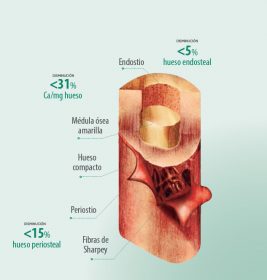Content available at: Español (Spanish) Português (Portuguese (Brazil)) العربية (Arabic)
Poultry companies have been surprised by the black bone syndrome very often. The main symptom and visible to the naked eye is the change in color of the meat adjacent to the bone, giving the product an unpleasant appearance and causing disgust in consumers. The problem of the black bone syndrome is not new, as various researchers have already reported it for a long time.
As early as 2002, many authors cited that “discoloration of raw or cooked meat can occur due to cell breakdown and migration of blood caused by the slow rate of cooling.” The color of cooked meat adjacent to the femur is affected by the combination of cooling temperature and other factors. In 2004, several researchers attributed to the marrow the responsibility for the redness of the meat. They proposed that “the darkening of the bone is linked to the freezing of the cuts before cooking.”
The black bone syndrome usually affects fast-growing chickens leading to an increase in metabolic rates. Therefore, the continuous decrease in the fattening period causes the formation of the bones to be very rapid, and their mineralization is insufficient1.
In the current genetic lines, the content of calcium in the bone (mg Ca / mg of bone), the bone endosteum, and the bone periosteum are 31%, 5%, and 15% lower, respectively, compared to those from the year 2000.
An increase in the porosity of the cortical bone of birds has been observed, which is accompanied by a higher incidence of bone disorders1.

The black bone syndrome is already seen in raw cuts with bone, but its expression is intensified in cooked cuts.
Storage temperature
Another factor that contributes to
Keep up to date with our newsletters
Receive the magazine for free in digital version
REGISTRATION
ACCESS
YOUR ACCOUNT
LOGIN
Lost your password?










